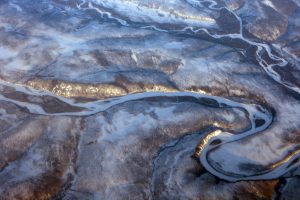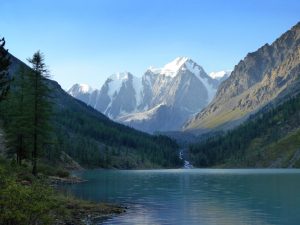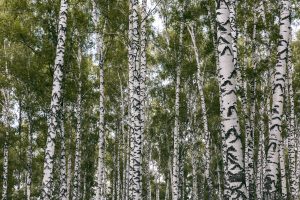85 Russian Domain: Regional Example – Siberia

Cold, vast, and unpopulated except for convicts and reindeer herders. This popular conception of Siberia has elements of truth to it, but begs for a more complete understanding. Siberia is the enormous Russian landmass east of the Ural Mountains. Larger than any country in the world (except obviously Russia), Siberia covers five million square miles.
In popular terminology and from its earliest noted history, Siberia refers to all of the land east of the Urals, stretching to the Pacific Ocean. (In this essay the use of the term “Siberia” will be in this broadest sense, unless otherwise noted.) In Russia, however, this territory often is sub-divided for practicality. During the Soviet period, Siberia was divided into West Siberia, East Siberia, and the Far East. Currently, under the Russian Federation’s format of federal districts, Siberia consists of the Urals federal district, the Siberian federal district, and Far Eastern federal district. Yet another geographic delineation of Siberia marks the eastern boundary as the watershed between Pacific and Arctic drainage, thus leaving Siberia to fall short of the Pacific Ocean. In its broadest sense Siberia represents over ¾ of Russia’s area.
For all its vast territory Siberia remains sparsely populated. A major cause of this low population density is the challenging climate, that of northern cold. Overall, Siberia holds about eight people per square mile, though many of the farther northern lands average only one or two people per square mile. Southern lands linked by the Trans-Siberian Railway have the highest population density. Population trends for areas not privy either to rail or river transportation are subject to a negative feedback loop. Due to the lack of transportation, these locations do not increase in population; however, due to the lack of population, they do not become connected to the network of transportation. Although Siberia is this vast natural landmass, over 2/3 of the population of Siberia lives in urban settings.
Siberia has long been Russian territory, though the precise origin of its name has been muddled or lost over the centuries. While many accept the Turkic word for “sleeping land” as the historical and logically appropriate origin for the toponym, others maintain that the region is named for one or another tribe native to the region.
The earliest settlement of Siberia came from small ethnic groups that progressively found themselves displaced by more numerous and/or more powerful nations. By migrating to the Siberian frontier, clearly a less desirable location with much lower agricultural production, these ethnic groups escaped confrontation. Although these nationalities are multiple, their populations are small. The majority population in virtually every sub-region is Russian (or Russian + Ukrainian). This minority status for natives is the result of Russian exploration, exile, and migration. Russian traders and Cossacks entered Siberia in the 16th century, eventually prompting the construction of Russian forts progressively eastward, with Russian settlers reaching the Pacific Ocean by the end of the 17th century. Siberia’s isolation made it an attractive setting for Russian and later for Soviet authorities to exile political opposition or to imprison criminals. And then, the completion of the Trans-Siberian Railroad in 1916 linked laborers and raw materials with European Russia.

The dominant landscape of Siberia is taiga, the predominantly coniferous forest. Northern locations feature tundra, while much of the region contains permafrost soils. The West Siberian Lowland is the world’s largest section of continuous lowland, whereas mixed elevations and occasional mountain ranges are found in the rest of Siberia.
The key importance of Siberia is its vast diversity and rich quantities of minerals and energy resources. Oil and natural gas reserves are immense in West Siberia, particularly in the Tyumen region. Considerable development of these energy deposits was accomplished during the Soviet era, including an area of pipelines directed to Russian cities as well as far beyond Russia into Western Europe.

Extraction of raw materials – nickel, gold, coal, diamonds, timber, water power, and much more – was begun in the tsarist years, but was greatly accelerated during Stalinist industrialization and propelled by vast numbers of prison laborers. Even fisheries off the eastern edges of Siberia in the Sea of Okhotsk produce large returns. While the great storehouses of resources remain in Siberia, the demise of the Soviet subsidies and the elimination of prison and directed laborers have diminished the rates of resource utilization. Issues of labor and of pollution, but most prominently of profit, have closed mines and factories in various Siberian locations.
Overall, Siberia is abundant in land area, natural resources, permafrost, and cold; in contrast, it is short on people and roads.
Cited and additional bibliography:
Stiefel, Klaus. n.d. Northern Siberia from Above. Accessed May 27, 2020. https://tinyurl.com/NorthernSiberia. Attribution-NonCommercial 2.0 Generic (CC BY-NC 2.0).
Varoquaux, Gael. n.d. Shavla Lake, Siberia. Accessed May 27, 2020. https://tinyurl.com/ShavlaLakeSiberia. Attribution 2.0 Generic (CC BY 2.0).

